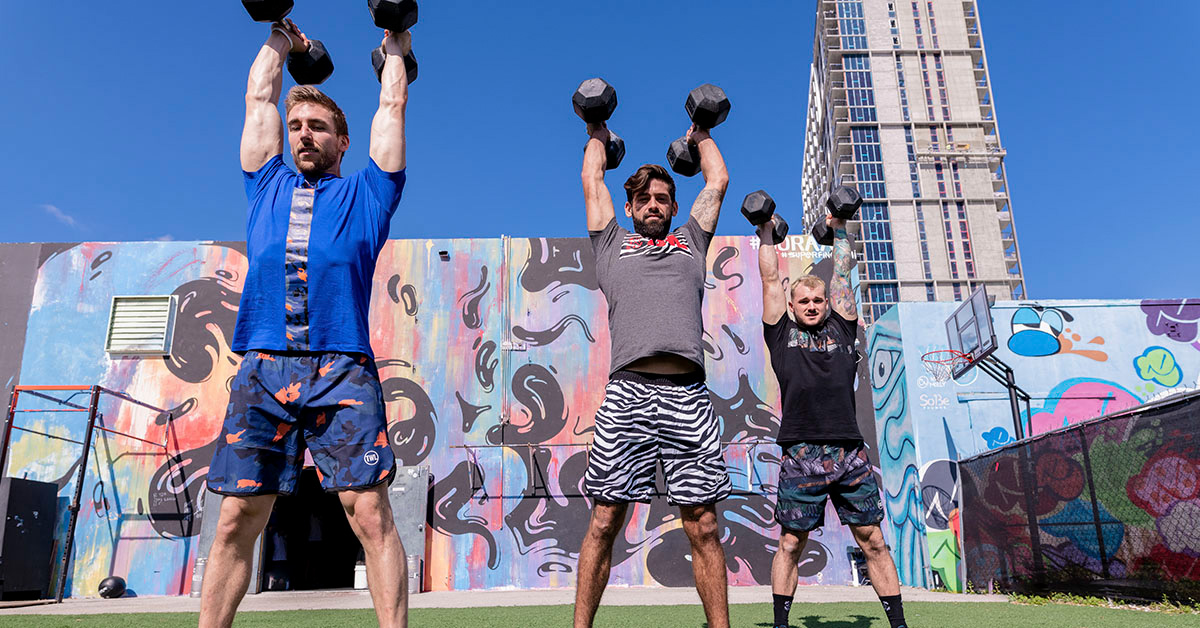We’re going to guess that you have specific goals you want to hit in the gym. Maybe you want to deadlift 100kg. Or you want to clean 65kg. Or you want to back squat 130kg. Whatever your goals might be, one thing is mandatory if you want to get there: progressive overload. What is the overload principle, why should it matter to you, and how do you go about using it?
What is the Overload Principle?
The overload principle says that an exercise must become more challenging over time to produce positive results. With a more challenging stimulus, the body is required to work harder to adapt. This means you’re less likely to experience a fitness plateau.
Most often, when we’re talking about the overload principle, it’s in reference to building strength. This means that your training volume needs to increase over time. Your volume consists of:
- The number of reps you do.
- The number of sets you do.
- The weights you lift.
Some athletes will simply try to work out more frequently, perhaps training twice a day. (Approach this one with caution, because overtraining syndrome is a real thing.)

Usually, though, increasing the weight you lift is how you can best apply the overload principle. Or, you can increase both the weight and the reps/sets. Do note, though, that only increasing the reps won’t necessarily trigger the results you want. This is because the weight you’re moving needs to be somewhere above approximately 60% of your one-rep max in order to encourage muscle growth, also known as hypertrophy. In other words, deadlifting 10kg 100 times isn’t going to do anything just because you performed an insane number of reps, if your one-rep-max deadlift is 100kg.
How to Apply the Overload Principle to Your Training
If you want to make this work for you, here are a few things you’ll want to consider.
1. Know What Your Maxes Are
As we said a moment ago, you’ll like want to be lifting at least 60% of your one-rep max if you want to encourage muscle growth. (More on this in a minute.) You can’t know what 60% is if you don’t know what your one-rep max is! Over the coming weeks, make a point of finding a heavy single for things like your:
- Deadlift.
- Bench press.
- Front squat.
- Back squat.
- Strict overhead press.
- Clean and jerk.
- Clean (on its own).
- Jerk (on its own).
- Snatch.
Write these down someplace you can easily access them, like the inside cover of your gym journal or in a note on your phone. These are the numbers you’ll work off of to find your percentages each day.

2. Increase the Volume Gradually Over Time
There’s a reason people refer to it as progressive overload. If you’re front squatting 50kg on Week 1, you’re not going to jump to 70kg on Week 2. Muscle growth takes time, and baby steps are where it’s at.
Also, keep in mind that you don’t build much strength from missing reps. You build strength from finishing them. So, pick weights that are challenging but doable!
3. Mix Up the Movements
If you did squats yesterday, then you might want to opt for benching or deadlifting today, as your main compound lift. Yes, you still might be working some of the same muscles, but you want to avoid targeting the exact same muscles and muscle groups back to back and doing so in the same exact way (for example, doing heavy squats two days in a row).
4. Play with the Percentages
The lower the reps, the higher the weight. The higher the reps, the lower the weight. Trial and error are normal to find the right weights vs reps for you, so don’t be afraid to mess with the percentages a little bit. Over time, you’ll gain a good understanding of roughly what percentage you should be lifting based on the reps.
5. Always Prioritize Form and Technique
Increasing your weights month to month doesn’t mean anything if your form becomes sloppy. You will hit a plateau and you’re putting yourself in a place to get injured. If you need to pause at a certain weight for longer than you planned until you can perform that movement with the proper technique, do it.

6. Write it All Down
Don’t try to commit all of this to memory, because you will forget. When you’re writing down you’re programming each day, you should take note of:
- The number of reps and sets you did.
- The percentages for each set and what the corresponding weight was.
- How you felt during the exercise.
7. Rest! More isn’t Always Better
We’ve said it many times before and we’ll say it again. Training is when you break your muscles down. Rest is when you build them back up. The overload principle does not mean, “Train as much as you can to increase the volume as much as you can!” This is a good way to hurt yourself.
Recovery days don’t make you lazy. They make you smart and strategic. In fact, many athletes don’t get stronger because they don’t rest enough. If you don’t like sitting on your bum all day, try active recovery, so you get to move your body a little bit. Active recovery tends to help speed up recovery, too. Bonus!
Do You Follow the Overload Principle Forever?
Great question! Building strength is not a linear process. You won’t gain strength every week and every month like clockwork. This isn’t how the human body works.
This is where something called periodization comes into play. It refers to planning out and varying your training cycles. To do this, you want to alternate periods of high-intensity training with periods of low-intensity training or rest. If you go really hard for three months, then it only stands to reason that for maybe that fourth month, you take things down a notch.
Again, this isn’t lazy. It’s strategic!
Finally, we want to leave you with this: Rome wasn’t built in a day. If you max out your deadlift two weeks in a row and there’s no change, that doesn’t mean the overload principle isn’t working for you. Give yourself time and look for progress across months, not days.

















